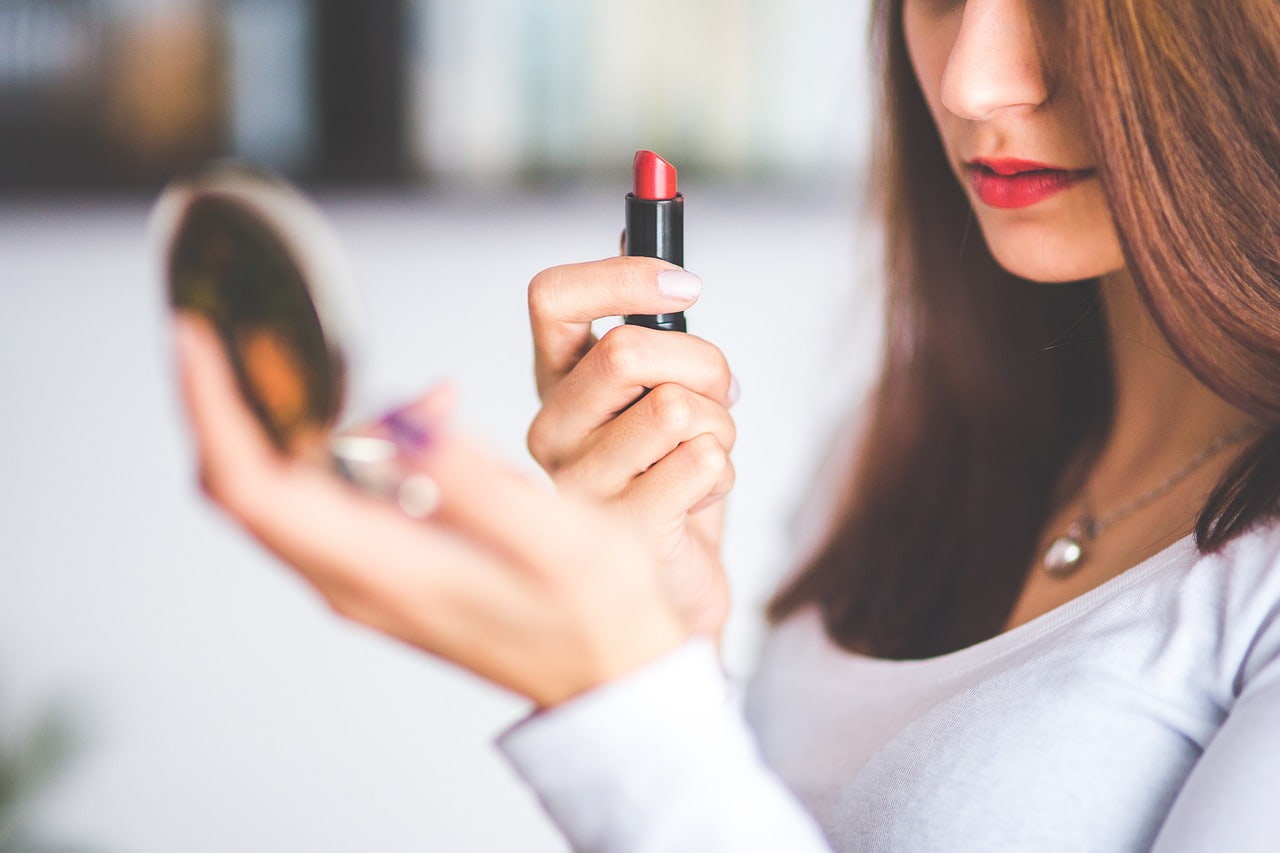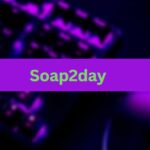Introduction to Lipstick Branding
Welcome to the world of lipstick branding, where a small tube of color can transform not just your look but also your confidence. Have you ever wondered what goes into creating that perfect pout? Behind every successful lipstick brand lies a carefully crafted strategy that captivates consumers and leaves them reaching for their wallets.
In this blog post, we’ll delve deep into the secrets of lipstick branding, exploring everything from understanding the target market to leveraging social media to create a buzz. We’ll uncover the importance of brand identity and packaging and explore the fascinating role of color psychology in capturing attention and influencing consumer behavior.
Get ready to immerse yourself in case studies featuring some of the most iconic lipstick brands and their effective branding strategies. From classic reds to trendy nudes, we’ll dissect how these brands have managed to carve out their unique identities in an industry saturated with competition.
But it’s not all smooth sailing in the world of lipstick branding. We’ll also discuss challenges faced by brands today and highlight current trends shaping this dynamic landscape. Additionally, we’ll provide valuable tips on creating a successful lipstick brand that stands out from the crowd.
Understanding the Target Market
To create a successful lipstick brand, it is crucial to have a deep understanding of your target market. Who are they? What do they want and need? You can tailor your branding efforts to resonate with your audience by answering these questions.
One key aspect of understanding the target market is demographics. Take into account variables like location, gender, and age.
Another essential factor to consider is psychographics. This involves delving into your target market’s attitudes, values, and lifestyles.
Market research plays a crucial role in uncovering these insights. Use focus groups or surveys to get direct input from prospective clients. Analyze trends in the beauty industry to identify gaps in the market that your brand can fill.
You can develop products that meet their needs and preferences by truly understanding your target market. This knowledge will also inform your branding strategy – from packaging design to marketing campaigns.
Importance of Brand Identity and Packaging
Brand identity and packaging play a crucial role in the success of any lipstick brand. They are not just about aesthetics but also powerful tools for communicating the brand’s values, personality, and unique selling points to its target market.
Brand identity creates a distinct and recognizable image that sets a lipstick brand apart from its competitors. This includes the logo, typography, color palette, and overall visual style. A well-crafted brand identity helps create an emotional connection with consumers and fosters loyalty.
On the other hand, packaging serves as the first point of contact between a consumer and a lipstick product. It should be visually appealing yet practical at the same time. The design should reflect the brand’s personality while considering ease of use and portability.
The proper packaging can make or break a purchase decision. Consumers are drawn to attractive packaging that stands out on store shelves or online platforms. It conveys professionalism, quality, and attention to detail – all essential to building trust with potential customers.
Furthermore, consistent branding across different products within a lipstick line is crucial for creating brand recognition among consumers. It reinforces their connection with your company when they see familiar colors or design elements associated with your brand across various products or collections.
Color Psychology in Lipstick Branding
Regarding lipstick branding, color is crucial in capturing consumers’ attention and conveying the brand’s personality. Different colors evoke different emotions and associations, making it essential for brands to understand the psychology behind them.
Red, for instance, is often associated with passion, power, and confidence. It is a classic choice for many lipstick brands as it symbolizes femininity and allure. On the other hand, pink represents youthfulness and innocence, appealing to those who prefer a more playful and girly look.
For those seeking sophistication and elegance, nude shades are popular choices. These colors give off a natural vibe while subtly enhancing one’s features. Bold shades like purple or black can attract individuals who want to make a statement or express their uniqueness.
Lipstick brands must consider their target market when choosing colors, as different demographics may have varying preferences. Younger consumers might be more drawn to bright hues that exude energy, while older customers may prefer softer tones that enhance their natural beauty.
In addition to attracting customers based on personal preference or age group, some brands also strategically use color psychology in packaging design by utilizing complementary or contrasting colors that create a visual impact on store shelves.
By understanding color psychology in lipstick branding, companies can effectively communicate their brand identity through carefully chosen shades that resonate with their target audience.
The Role of Social Media in Creating a Buzz
Social media has revolutionized how brands connect with their audience; lipstick branding is no exception. Platforms like Instagram, Facebook, and TikTok have become powerful tools for creating a buzz around new lipstick launches and building brand awareness.
One of the key benefits of social media in lipstick branding is its ability to reach a broad audience quickly. With millions of users logging on daily, brands can showcase their latest shades, share tutorials on achieving the perfect pout, or even collaborate with influencers who can endorse their products.
Moreover, social media allows brands to engage directly with consumers through comments and direct messages. This creates an opportunity for real-time feedback and interaction that traditional advertising methods cannot match. Brands can gain valuable insights into what customers want from their lipsticks and use this information to refine their product offerings.
Another advantage of social media is its visual nature – it’s all about aesthetics! Lipstick brands can create visually stunning campaigns that catch the attention of potential customers as they scroll through their feeds. Eye-catching images or videos showcasing different lip colors on diverse models help establish a strong brand identity.
Additionally, social media platforms offer various ad formats, such as sponsored posts or stories. Through targeted ads based on demographics like age group or location, lipstick brands can ensure their message reaches the right people at the right time.
Furthermore, user-generated content plays a significant role in creating a buzz around lipstick brands on social media. When consumers post pictures or reviews wearing a particular shade or rave about its long-lasting formula online, it generates authentic excitement among others interested in trying similar products.
Case Studies: Successful Lipstick Brands and Their Branding Strategies
Let’s dive into some real-life examples of lipstick brands that have nailed their branding strategies. These case studies will give us valuable insights into what works in the competitive world of lipstick branding.
One standout brand is MAC Cosmetics, known for its bold and diverse range of lipsticks. MAC has successfully positioned itself as a high-end, professional makeup brand. Its sleek black packaging with silver accents exudes sophistication and elegance, appealing to its target market of trendsetting individuals.
Another successful player in the lipstick industry is Kylie Cosmetics by Kylie Jenner. With her massive social media following, Kylie leveraged her brand to create a line of lip products that quickly became a sensation. The minimalist packaging design with the iconic “dripping lips” logo instantly grabs attention on shelves and online platforms.
Revlon is another notable example, establishing itself as a trusted and affordable beauty brand. Revlon’s approach to lipstick branding focuses on inclusivity and empowerment, offering a wide range of shades to cater to different skin tones. Their classic gold packaging adds a touch of glamour while maintaining accessibility for all consumers.
These case studies highlight the importance of understanding your target market’s preferences and creating an identity that resonates with them. These brands have captured consumers’ attention by developing unique packaging designs that stand out from competitors.
In addition to packaging design, color psychology plays a crucial role in lipstick branding strategies. Certain colors evoke specific emotions or convey distinct messages. For instance, red symbolizes confidence and passion, making it popular among those seeking bold statement lipsticks.
Social media has also played a significant role in promoting the success stories of lipstick brands. Platforms like Instagram offer opportunities for engaging visuals and influencer collaborations that generate buzz around new launches or limited-edition collections.
As trends continue evolving in the ever-changing beauty industry, challenges arise for lipstick brands looking to stay relevant amidst fierce competition.
Challenges and Trends in Lipstick Branding
In the ever-evolving world of cosmetics, lipstick branding faces its fair share of challenges. One major obstacle is standing out in a saturated market. With countless brands vying for attention, creating a unique identity that resonates with consumers can take time and effort.
Another challenge lies in understanding and catering to different target markets’ diverse needs and preferences. The beauty industry is inclusive, embracing individuals from all walks of life. Successful lipstick brands recognize this diversity and strive to offer products that cater to a wide range of skin tones, ages, and personalities.
Keeping up with trends is crucial for staying relevant in the competitive landscape. From matte finishes to bold statement colors, consumer preferences are constantly changing. Brands must stay on top of these trends while maintaining their distinct style.
Social media plays a significant role in shaping lipstick branding today. Platforms like Instagram have become virtual runways where consumers showcase their favorite lipsticks. This presents both opportunities and challenges for brands – they can leverage social media influencers to promote their products but must also navigate through potential controversies or negative feedback.
Sustainability has become another significant trend in recent years as more consumers prioritize eco-friendly products. Lipstick brands are exploring sustainable packaging options using recyclable materials or refillable options.
Innovation is vital in overcoming these challenges and staying ahead of the curve. Brands must continuously push boundaries by introducing new formulas, shades, and packaging designs that capture consumers’ attention.
To succeed in lipstick branding today requires adaptability, creativity, and an unwavering commitment to meeting consumer demands head-on.
Tips for Creating a Successful Lipstick Brand
1. Know Your Target Market: Before diving into lipstick branding, it’s crucial to understand your target market. Who are they? What are their preferences and needs? Research their demographics, lifestyle choices, and beauty trends to tailor your brand accordingly.
2. Develop a Strong Brand Identity: A successful lipstick brand needs a distinct identity that sets it apart from the competition. Consider factors like brand values, mission statement, and unique selling points while creating your brand image.
3. Focus on Packaging: The packaging plays a pivotal role in attracting customers. Invest in eye-catching designs that reflect your brand’s personality and resonate with your target audience.
4. Choose Colors Wisely: Color psychology is essential in lipstick branding. Different shades evoke different emotions, so select colors that align with your brand message and appeal to your target market.
5. Leverage the Power of Social Media: In today’s digital age, social media is an indispensable tool for building awareness and connecting with consumers. Create engaging content, collaborate with influencers, and run targeted ad campaigns to create buzz around your lipstick brand.
6. Stay Ahead of Trends: Keep up-to-date with the latest beauty trends and adapt them creatively into your lipstick line-up. Experimenting with new formulas or finishes can help you stay relevant in the ever-evolving industry.
7. Cultivate Customer Loyalty: Building long-term relationships is vital for success. Offer personalized experiences through loyalty programs or exclusive perks to keep customers returning for more.
8. Provide Quality Products and Exceptional Service: Nothing beats quality products backed by outstanding customer service! Ensure consistency in product performance while providing prompt assistance to build consumer trust.
Conclusion
In the ever-evolving world of lipstick branding, success lies in understanding your target market and creating a solid brand identity. By carefully considering packaging, utilizing color psychology, harnessing the power of social media, and learning from successful case studies, you can create a lipstick brand that stands out from the competition.
However, it’s important to note that lipstick branding has its challenges. The beauty industry is saturated with countless brands vying for attention. To cut through the noise, staying up-to-date with current trends and continuously adapting your strategies is crucial.
Remember to stay true to your vision and values when creating your lipstick brand. Authenticity resonates with consumers looking for products that align with their beliefs and lifestyle choices.
Remember to underestimate the power of storytelling. People connect emotionally with narratives that evoke desire or inspire confidence. Use compelling stories to captivate your audience and forge a lasting connection between them and your brand.
FAQS
1. What is lipstick branding?
Lipstick branding creates a unique and compelling brand identity for a lipstick product. It involves understanding the target market, crafting an appealing brand image, designing eye-catching packaging, and utilizing effective marketing strategies to create a successful lipstick brand.
2. Why is understanding the target market important in lipstick branding?
Understanding the target market is crucial in lipstick branding because it allows brands to tailor their products and marketing efforts to their ideal customers. By identifying consumers’ preferences, needs, and desires, brands can create lipsticks that resonate with their target audience’s tastes and lifestyle choices.
3. How does color psychology play a role in lipstick branding?
Color psychology is significant in lipstick branding, as different colors evoke specific emotions and perceptions. For example, bold red shades represent confidence and power, while soft pink hues convey femininity and innocence. Brands carefully select colors for their packaging design to elicit desired emotional responses from consumers.
4. How does social media impact creating a buzz around lipstick brands?
Social media has revolutionized how cosmetic brands interact with consumers by providing instant communication and content-sharing platforms. Lipstick brands leverage social media channels like Instagram or TikTok to showcase new product launches, engage with influencers who promote their lipsticks, run interactive campaigns or tutorials, and gather feedback directly from customers, thus generating excitement among followers.
5. Can you provide examples of successful lipstick brands that have implemented effective branding strategies?
MAC Cosmetics is renowned for its diverse range of high-quality lipsticks catering to various skin tones worldwide while also using collaborations with celebrities like Rihanna or Lorde as part of its strategy.
Another example is Kylie Cosmetics, founded by Kylie Jenner, which gained immense popularity through influencer marketing tactics combined with limited edition releases, generating massive hype among her millions of followers across social media platforms.










